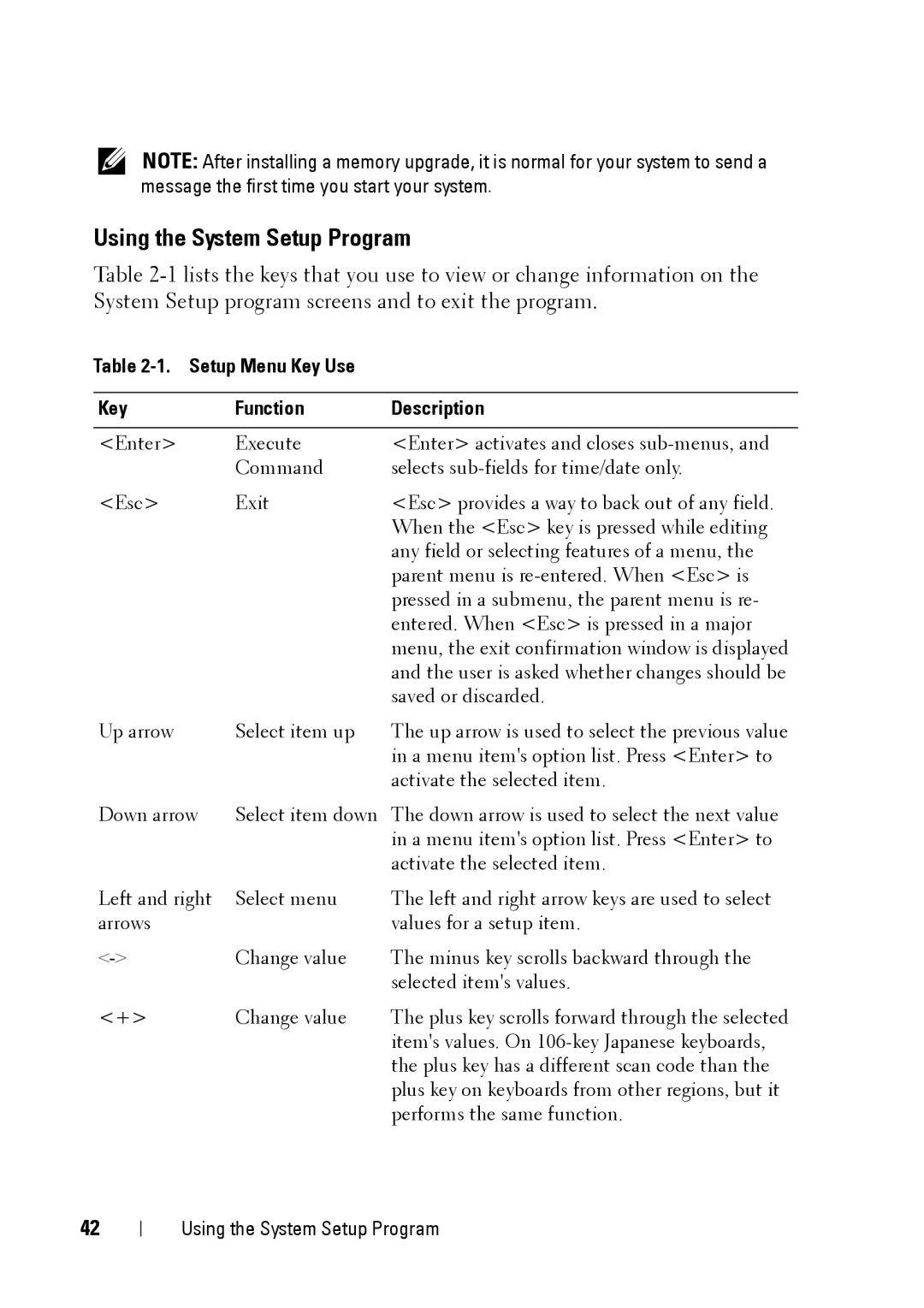
NOTE: After installing a memory upgrade, it is normal for your system to send a message the first time you start your system.
Using the System Setup Program
Table
Table 2-1. Setup Menu Key Use
Key | Function | Description |
|
|
|
<Enter> | Execute | <Enter> activates and closes |
| Command | selects |
<Esc> | Exit | <Esc> provides a way to back out of any field. |
|
| When the <Esc> key is pressed while editing |
|
| any field or selecting features of a menu, the |
|
| parent menu is |
|
| pressed in a submenu, the parent menu is re- |
|
| entered. When <Esc> is pressed in a major |
|
| menu, the exit confirmation window is displayed |
|
| and the user is asked whether changes should be |
|
| saved or discarded. |
Up arrow | Select item up | The up arrow is used to select the previous value |
|
| in a menu item's option list. Press <Enter> to |
|
| activate the selected item. |
Down arrow | Select item down | The down arrow is used to select the next value |
|
| in a menu item's option list. Press <Enter> to |
|
| activate the selected item. |
Left and right | Select menu | The left and right arrow keys are used to select |
arrows |
| values for a setup item. |
Change value | The minus key scrolls backward through the | |
|
| selected item's values. |
<+> | Change value | The plus key scrolls forward through the selected |
|
| item's values. On |
|
| the plus key has a different scan code than the |
|
| plus key on keyboards from other regions, but it |
|
| performs the same function. |
42
Using the System Setup Program
